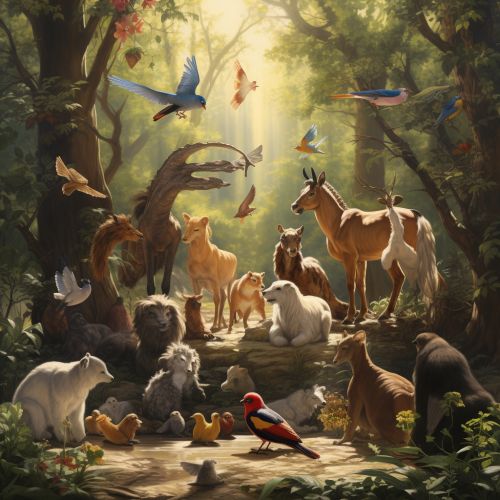The Science of Animal Kin Recognition and Social Behavior
Introduction
Kin recognition, the ability of an animal to identify its genetic relatives, is a fundamental aspect of the social behavior of many species. It plays a crucial role in a wide range of animal behaviors, such as cooperation, mate choice, and inbreeding avoidance. This article delves into the science behind animal kin recognition and its influence on social behavior.
Kin Recognition
Kin recognition is the ability of an organism to distinguish between close genetic relatives (kin) and non-relatives. This ability is widespread in the animal kingdom, with evidence of its existence in a variety of species, from invertebrates to mammals Kin Selection.
Mechanisms of Kin Recognition
There are several mechanisms through which animals may recognize their kin. These include spatial proximity, familiarity, phenotypic matching, and genetic markers.
Spatial Proximity
Many animals use spatial proximity as a cue for kin recognition. This is based on the assumption that individuals encountered in the same location are likely to be relatives.
Familiarity
Familiarity is another common mechanism for kin recognition. Animals that are raised together, regardless of their actual genetic relationship, often behave as if they are kin.
Phenotypic Matching
Phenotypic matching involves comparing an individual's own traits with those of others. If the traits match, the individuals are likely to be kin.
Genetic Markers
Genetic markers are specific DNA sequences that can be used to identify kin. These markers are often used in combination with other cues, such as spatial proximity or familiarity.
Social Behavior
Social behavior in animals is greatly influenced by kin recognition. Recognizing kin can lead to cooperative behavior, inbreeding avoidance, and even aggression.
Cooperative Behavior
Cooperative behavior, such as food sharing or collective defense, is often observed among kin. This is because helping relatives can increase an individual's inclusive fitness, which is a measure of an individual's genetic contribution to future generations Inclusive Fitness.
Inbreeding Avoidance
Inbreeding avoidance is another important aspect of social behavior influenced by kin recognition. Many animals avoid mating with close relatives to prevent the negative effects of inbreeding.
Aggression
Aggression can also be influenced by kin recognition. For example, some animals are more aggressive towards non-relatives, while others may show aggression towards relatives in competition for resources.
Conclusion
Understanding the science of animal kin recognition and social behavior is crucial for understanding the complex dynamics of animal societies. It provides insights into how animals interact with each other, how they form social bonds, and how they navigate their social environments.


